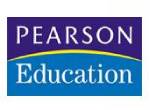Post Graduate Certificate in Cardiovascular Care
( PGCCC )
❖Hemodynamics
Learning Objectives
At the end of this course, the learner will be able to:
1. Assess client for decreased cardiac output (e.g., diminished peripheral pulses, hypotension)
2.
Identify cardiac rhythm strip abnormalities (e.g., sinus bradycardia,
premature ventricular contractions, ventricular tachycardia, atrial
fibrillation, ventricular fibrillation)
3. Manage the care of a
client with a pacing device
4. Manage the care of a client on telemetry
5. Intervene to improve cardiovascular client status (e.g., initiate a protocol to manage cardiac arrhythmias, monitor pacemaker functions)
6. Apply knowledge of pathophysiology to interventions in response to abnormal client hemodynamics
7. Provide client with strategies to manage decreased cardiac output (e.g., frequent rest periods, limited activities)
8. Monitor and maintain arterial lines
9. Manage the care of a client with alteration in hemodynamics, tissue perfusion, and hemostasis
10. Evaluate invasive monitoring data (e.g., pulmonary artery pressure, intracranial pressure
11. Manage the care of a client receiving hemodialysis or continuous renal replacement therapy
❖Central venous access devices
Learning Objectives
At the end of this course, the learner will be able to:
1. Educate the client on the reason for and care of a venous access device
2. Access central venous access devices
3. Provide care for a client with a central venous access device
❖Blood and Blood Products
Learning Objectives
At the end of this course, the learner will be able to:
1. Identify the client according to facility/agency policy before administration of red blood cells/blood products (e.g., prescription for administration, correct type, correct client, cross-matching complete, consent obtained)
2. Check the client for appropriate venous access for red blood cell/blood product administration (e.g., correct gauge needle, the integrity of access site)
3. Document necessary information on the administration of red blood cells/blood products
4. Administer blood products and evaluate client response
❖Total Parenteral Nutrition
Learning Objectives
At the end of this course, the learner will be able to:
1. Identify side effects/adverse events related to TPN and intervene as appropriate (e.g., hyperglycemia, fluid imbalance, infection)
2. Educate client on the need for and use of TPN
3. Apply knowledge of nursing procedures and psychomotor skills when caring for a client receiving TPN
4. Apply knowledge of client pathophysiology and mathematics to TPN interventions
5. Administer parenteral nutrition and evaluate client response
6. Assist with invasive procedures (e.g., central line, thoracentesis, bronchoscopy)
❖Fluid and Electrolyte Imbalance
Learning Objectives
At the end of this course, the learner will be able to:
1. Identify signs and symptoms of client fluid and electrolyte imbalance
2. Apply knowledge of pathophysiology when caring for the client with fluid and electrolyte Imbalances
3. Manage the care of the client with a fluid and electrolyte imbalance
4. Evaluate the client's response to interventions to correct fluid or electrolyte imbalance
AFFILIATED PARTNERS





